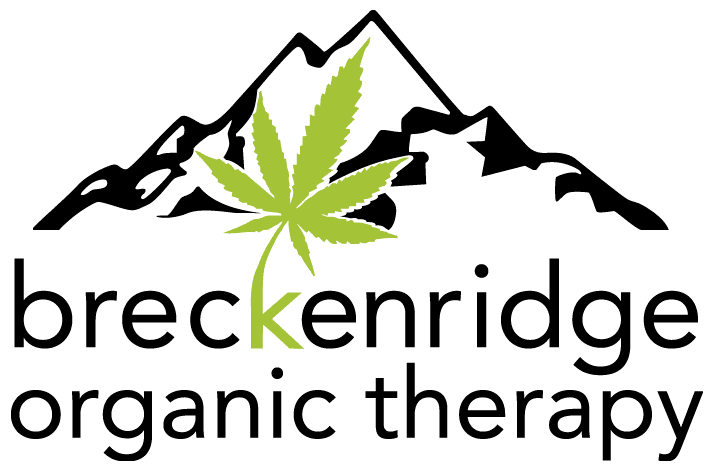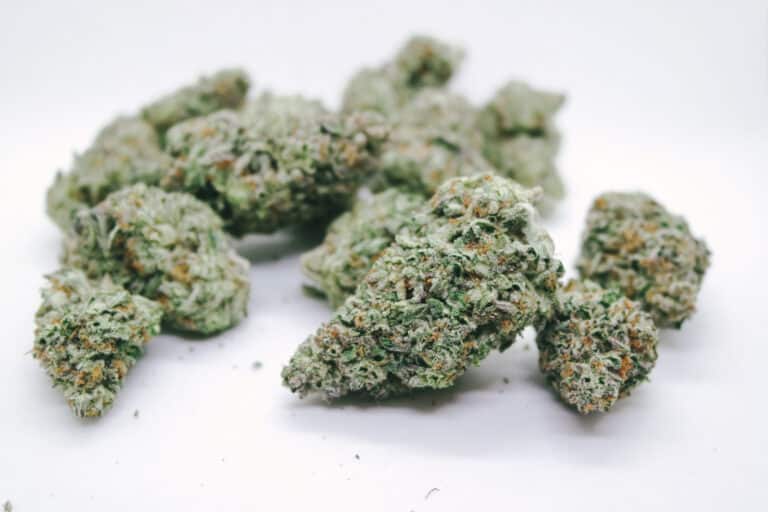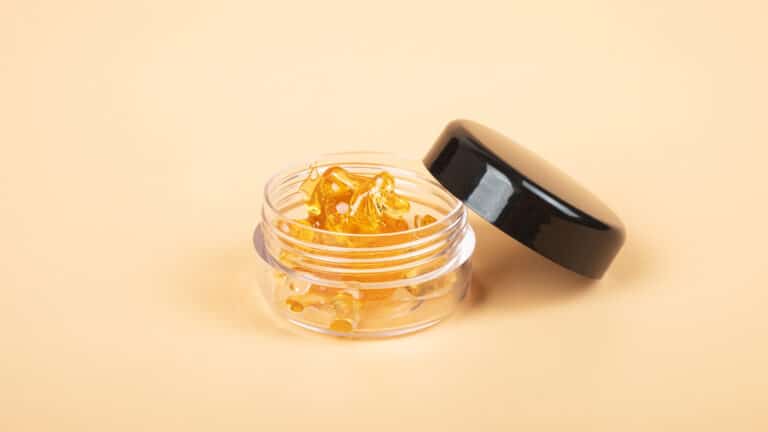Let’s Take a Deeper Look at Cannabinoids.
Our beloved Cannabis plant contains a variety of compounds called cannabinoids, most of which have never been discovered anywhere else on the planet. How many different types of cannabinoids are there, exactly? That’s hard to answer. You’ll often hear people claim that dozens, or even 100+ cannabinoids are produced in cannabis— but it is near impossible to know the exact number.
The majority of cannabinoids are present at low levels, particularly with commercial cannabis products, which makes it even more difficult for scientists to precisely pin point a number. But the important thing here to remember is that there are many.
So, let’s dive in and take a more detailed look at some of the lesser known cannabinoids this amazing plant produces.
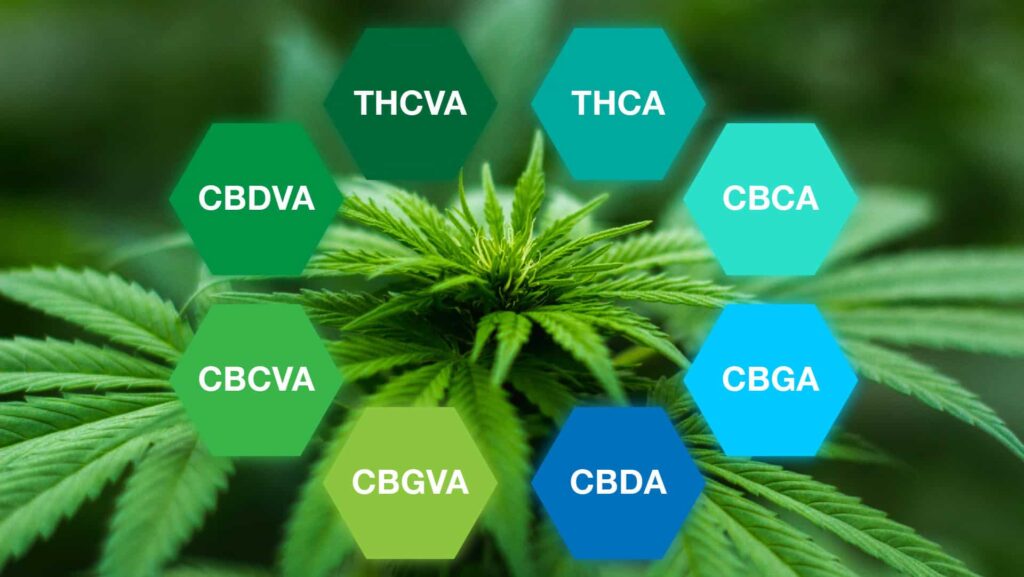
Cannabinoid Acids
You may be surprised to learn that Cannabis does not directly create the popular THC and CBD cannabinoid. Instead, they need to be synthesized by several different cannabinoid acids first. The acids need to be activated (decarboxylated), via heat in order to make THC or CBD. All cannabinoid acids are precursors to other cannabinoids before they are heated.
There are number of cannabinoid acids that are produced by Cannabis, but the ones we will be discussing today include:
- THCA (Δ9-tetrahydrocannabinolic acid)- THCA is a non-psychoactive cannabinoid that is found in both live and raw cannabis. When THCA is heated, it is converted into THC. Some of THCA’s potential benefits include being an: Anti-inflammatory, Neuroprotective agent, Anti-emetic (anti-nausea), and an Anti-proliferative(anti-cancer). This can be helpful in treating a range of maladies including arthritis, cancer, neurodegenerative diseases, insomnia and pain.
- CBGA (Cannabigerolic acid): This compound is the building block for THCA, CBDA, CBCA, and CBG. Without CBGA, we wouldn’t have THC, or CBD. It also has anti-bacterial, anti-inflammatory, anti-proliferative, and analgesic properties that can help with ailments like arthritis, cancer, bacterial infections, and pain relief.
- CBCA (Cannabichromenenic acid): CBCA is a precursor of CBC, and is known for having anti-inflammatory, anti-microbial, and analgesic properties as well. As we know, anti-inflammatories are great for treating systemic inflammation like arthritis, analgesics are helpful in treating various types of pain, and anti-microbial properties kill harmful microorganisms.
- CBDA (Cannabidiolic acid): This potent acid has strong anti-inflammatory, proliferative (anti-cancer), and anti-sporostatic (prevents mold from spreading) properties.
- THCVA (Tetrahydrocanabivarinic acid): This acid is the precursor to THCV, and it has been found to be an appetite suppressant, helps with regulating blood sugar, preventing or reducing panic attacks, stimulates bone growth and may help with Alzheimer’s.
- CBGVA (Cannabigerovarinic acid): Precursor to CBGA, this acid has been shown to display anti-inflammatory properties which is beneficial for arthritis and other inflammatory issues.
- CBCVA (Cannabichromevarinic acid): CBCVA is one of the major compounds in cannabis, and it targets receptors in our bodies that help regulate sleep patterns, appetite, and mood.
- CBDVA (Cannabidivarinic acid): Much like it’s cannabinoid brothers, this acid is an anti-inflammatory, and it has other basic properties of cannabis that are capable of reducing anxiety, reducing the spread of cancer cells, pain relief, appetite stimulant, and helps with muscle tension.
CBDA and THCA are typically the two most abundant cannabinoid acids found in cannabis strains. The main cannabinoid acids are THCA, CBGA, CBDA, and CBCA. CBGA is the compound that tells the other enzymes to make the other three acids.
In addition to the “A” acid compounds we just discussed, there is an equal amount of “V” compounds that have a slightly shorter chemical structure.
These are: THCVA, CBGVA, CBCVA, and CBDVA.
These compounds do not produce a high like THC does, however they do have several interesting properties about them. For instance, most cannabinoids possess insecticidal and antibiotic properties—which is likely due to the plant trying to protect itself as a defense mechanism.
Cannabinoids Made from Acids
When the cannabinoid acids get exposed to heat, it loses a carboxyl group or “A” portion of its name and becomes neutral. This is called decarboxylation.
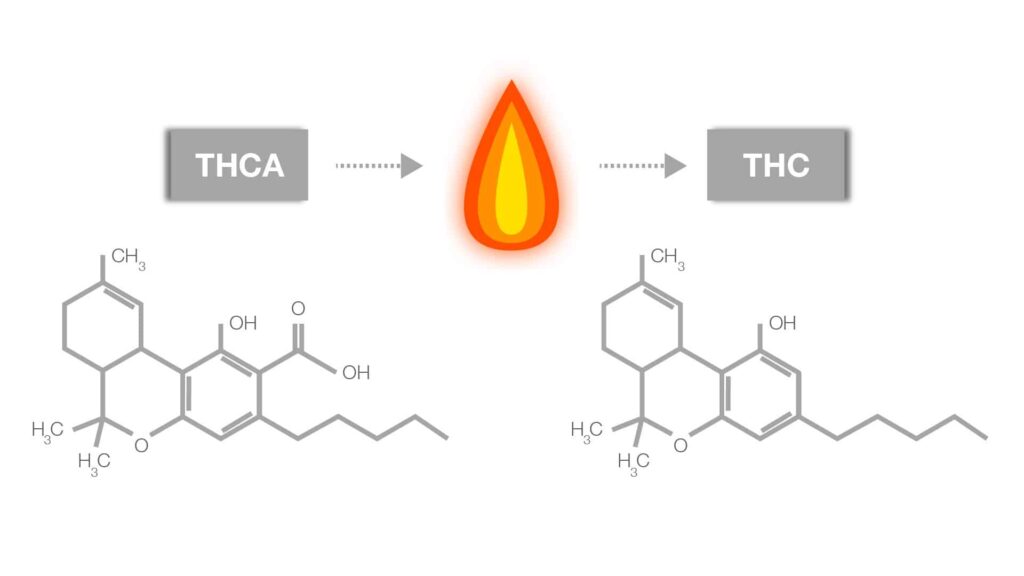
After decarboxylation, these cannabinoid acids create the following cannabinoid compounds:
- CBG (Cannabigerol): Broken down from CBGA, CBG acts on specific physiological systems and scientific studies and their medicinal benefits are very promising. It has been shown to be quite effective in treating glaucoma, inflammatory bowel disease, Huntington’s disease, cancer, and bacterial infections like Staph infection.
- THC (Δ9–tetrahydrocannabinol): The most popular cannabinoid there is, THC produces the psychoactive high—but it also has anti-cancer, analgesic, anti-nausea, anti-spasmodic, and helps with digestive issues. THC can also help treat emotional and mental illnesses like depression and anxiety, however it depends on the person how exactly they will be affected.
- CBD (Cannabidiol): Coming in at a close second for most popular cannabinoid is CBD. This natural remedy has been proven and raved about recently for its ability to relieve pain, reduce anxiety and depression, help alleviate cancer related symptoms, provide benefit for neurological disorders. It has also been discovered to have anti-psychotic, anti-tumor properties, and can also help regulate blood sugar, and reduce addictive behavior.
- CBC (Cannabichromene): CBC is the powerhouse of pain relief. It has been shown to bind to our TRPV1 and TRPA1 receptors, which are responsible for pain perception. CBC also seems to work synergistically with other cannabinoids, which enhances their health and mental benefits all around.
- CBGV (Cannabigerivarin): This cannabinoid has been shown to display anti-inflammatory properties which is beneficial for arthritis and other inflammatory issues.
- THCV (Tetrahydrocannabivarin): THCV has been found to be an appetite suppressant, helps with regulating blood sugar, preventing or reducing panic attacks, stimulates bone growth and may help with Alzheimer’s.
- CBDV (Cannabidivarin): A potent anti-inflammatory that has also demonstrated anti- anxiety properties, can reduce the spread of cancer cells, treat pain, stimulate an appetite, and helps with muscle tension.
- CBCV (Cannabichromevarin): This major compound in cannabis targets receptors in our bodies that have been shown to help regulate our sleep patterns, appetite, and mood.
Why Most Cannabinoids Do Not Get You Stoned
THC is the only cannabinoid that we positively know has intoxicating effects all on its own. Some evidence does suggest that THCV could possibly have intoxicating effects as well, however if it does or not depends on the dose.
While the majority of cannabinoids themselves are not intoxicating, their presence does influence how THC can affect you. CBD is an excellent example. Even though it won’t get you high on its own, it does impact how THC effects the CB1 receptors in the endocannabinoid system.
As we briefly discussed earlier, THCV has been found to have the potential to influence THC like CBD does. At low doses, it appears that THCV can diminish the ability of THC to activate CB1 receptors—but at high does it seems THCV activates CB1 receptors similar to THC. This is a great example of how dosages can greatly influence the overall effects and high you will experience, and why we always recommend starting off slow and low.
Final Hit
While there are more cannabinoids than we can name or discuss in this article, it is good to be aware of both the key players and the lesser known ones and all the benefits they have to offer. The more we study and apply cannabis and a variety of cannabinoids into our lives, the better our lives become—keeping in mind this is just the beginning of our understanding of this magical herb.
For a thorough, scientific run down of some of the lesser known cannabinoids and the pharmacology of cannabis and cannabinoids check out this highly informative video from the Cannabis and Hemp Conference and Expo Youtube channel.
Copyright © 2024 Breckenridge Organic Therapy |
Site by CannaPlanners
